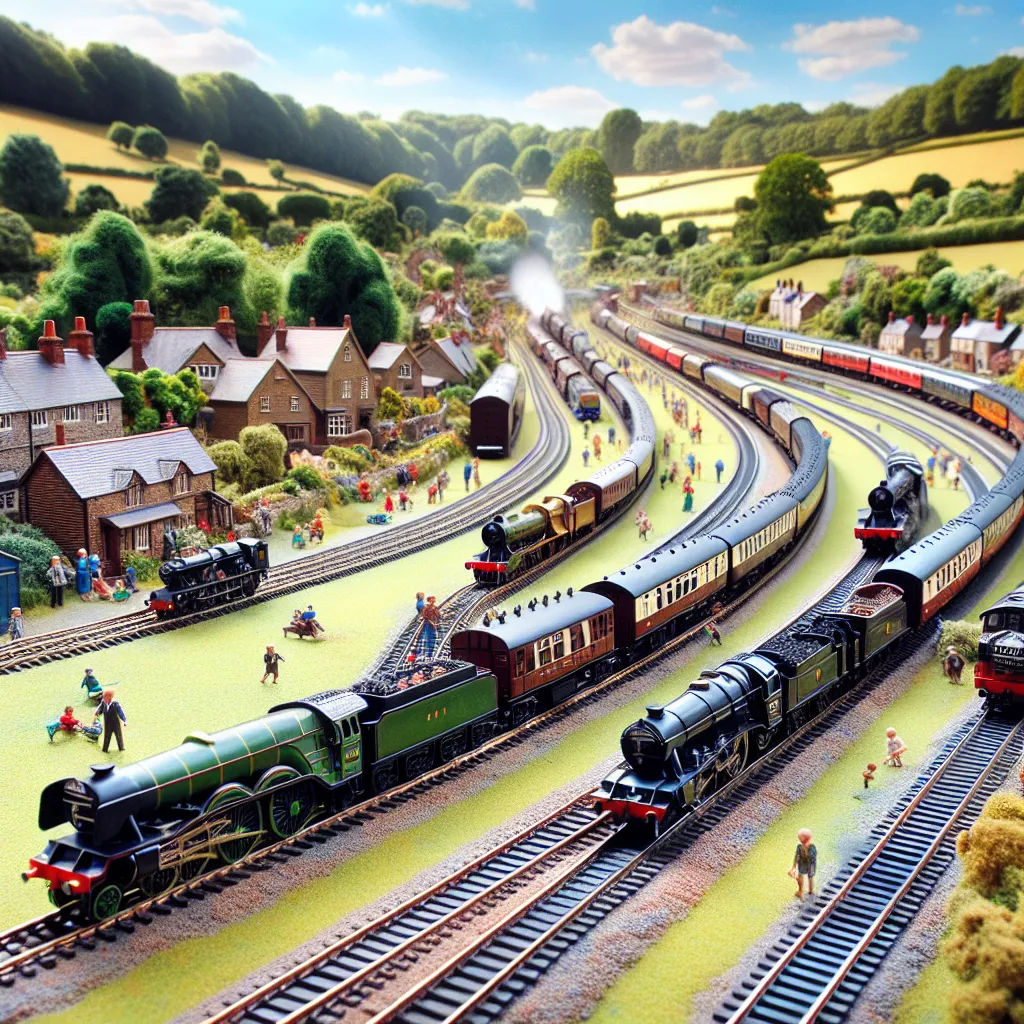Back in 2009, the show Toy Stories took a deep dive into some of our beloved childhood toys like LEGO, Plasticine, Meccano, Scalextric, and Etch-a-Sketch. The goal was to revive the nostalgia, pulling them out from dusty cupboards and celebrating their timeless appeal. This time, the fascination wasn’t just about construction; they ambitiously aimed to build the world’s longest train set—a 10-mile-long OO gauge track. It was intended to trace the old railway route between the Devonshire towns of Barnstable and Biddeford.
Five eager trains departed Barnstable, including one enthusiasts’ favorite—the Flying Scotsman, which I’d had since I was nine. But what was meant to be a nostalgic trip soon turned into a chaotic disaster. Despite the sheer enthusiasm and crowd support, none of the trains completed the journey. I was particularly cheesed off that my Flying Scotsman barely made it past the first bend.
Yet, the train set had a special place in my heart, and I couldn’t let it end in failure. So, in the spirit of railway pioneers like Stephenson, I decided to give it another shot. This time, we introduced a race, making the challenge even tougher. I headed up the British team, stacked with locals and toy train aficionados. Our rivals? None other than the German experts from Miniature Wonderland, home to the planet’s largest toy train attraction.
The Germans were supremely confident, driven by their immense pride and track record of 900 trains covering over 2.5 million miles. They believed they could win easily. However, our route was technically challenging, with the 10-mile course featuring ominous stretches and tricky bends.
The race spanned several intricate segments, starting from Barnstable’s new suburbs, leading through old industrial hubs, speeding across open fields, and dodging treacherous chicades. The finish line was at Biddeford’s long-abandoned station platform. To add to the complexity, we needed a double track to accommodate the competition, unlike our previous single-track attempt.
To set the ground rules, I gathered my team of spirited volunteers from diverse walks of life. We had clergy, mayors, tech experts, retirees, kids, and even some grumpy old men. Everyone was united by the sheer determination to see a toy train complete the journey. Britain’s charm is vividly displayed when people from all backgrounds come together for a whimsical cause.
The Germans, meanwhile, took the competition very seriously, experimenting with absurd power sources like sauerkraut liquor for their trains. Their dedication to the challenge was awe-inspiring, a testament to their commitment.
But we weren’t far behind. Our chief engineer, Sim, came up with innovative solutions, fondly dubbed the “track-o-matic,” a machine to aid in laying the track faster and more efficiently than ever. Although it faced its own hurdles, the spirit of innovation wasn’t lost on us. My vintage Flying Scotsman got a complete overhaul, and I even enlisted wine connoisseur and train enthusiast Oz to help drive it.
The day of the race arrived, and it was a battle of engineering marvels and old-school spunk. Despite the Germans speeding ahead initially, our Intercity 125 proved its mettle, especially as the Germans’ high-speed train eventually broke down.
Hours into the race, each team faced setbacks and breakthroughs, with cheers and groans echoing across the track. The tension reached its peak as the race neared its end. The German diesel-electric Donald Duck reached Barnstable first, but it wasn’t long before our Intercity followed, moments filled with drama and excitement.
The final stretch saw an incredible display of human ingenuity and perseverance. Despite technical issues, our hydrogen-powered train made it to the finish line. Finally, my cherished Flying Scotsman, against all odds, crossed the finish line at Biddeford, symbolizing not just a win but a triumph over past failures.
In the end, it was more than just a race; it was a celebration of creativity, camaraderie, and sheer determination. Whether through the spirit of competition or a love for childhood toys, the event left an indelible mark on everyone involved. While one team celebrated victory, everyone shared in the joy of bringing a piece of history back to life. That’s what makes stories like these so magical, a testament to human spirit and the joy of play.






